Photo: Allister Ann
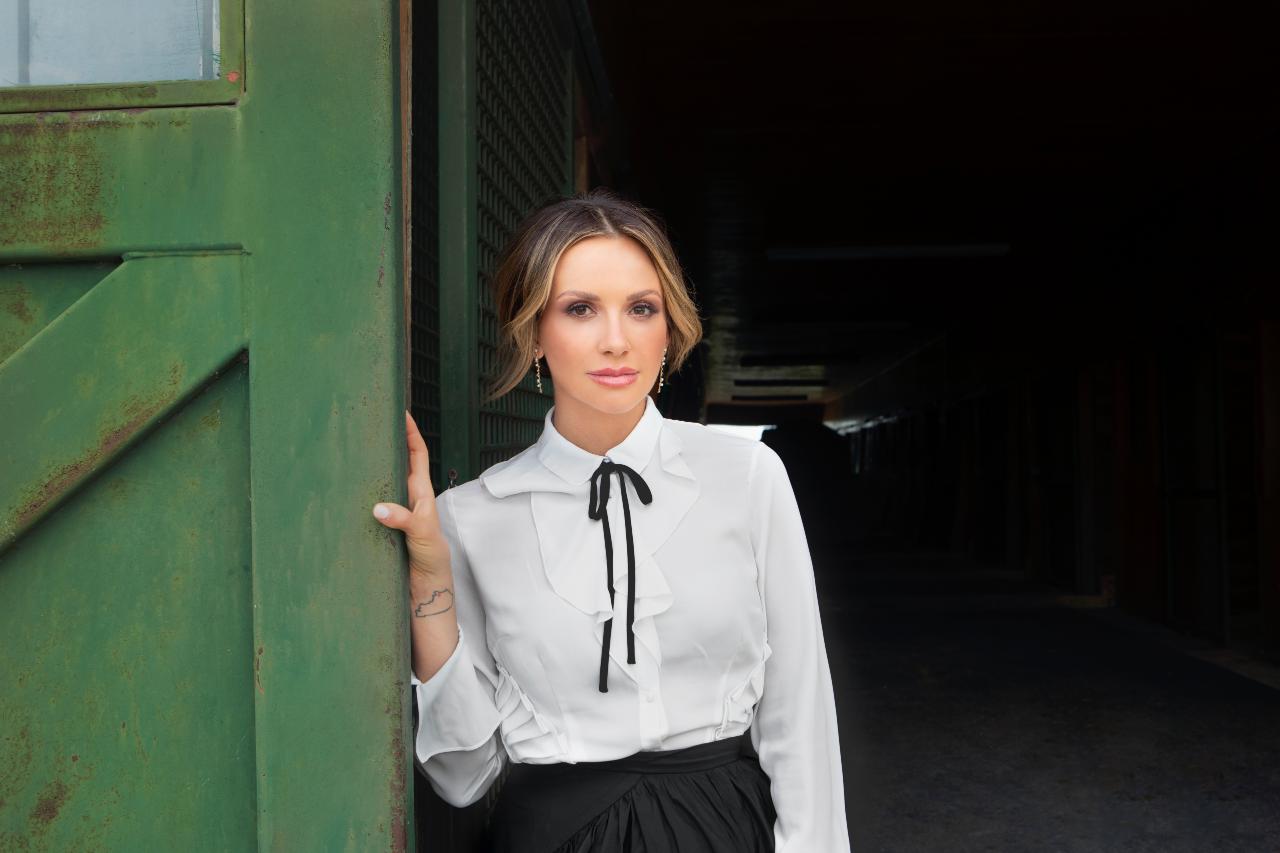
Carly Pearce
news
Carly Pearce on '29: Written In Stone,' Relating to Kacey Musgraves & Becoming The Country Artist She's Always Wanted To Be
Country star Carly Pearce opens up about how a divorce and the death of her producer led to her most meaningful album yet, '29: Written In Stone'
"So much has happened to me in the last year," Carly Pearce wrote in an Instagram post announcing her forthcoming third album, 29: Written in Stone. It's a bit of an understatement: Nine months after losing her longtime producer busbee to brain cancer in 2019, the country star filed for divorce from fellow country singer Michael Ray.
But, as Pearce wrote, in the wake of the heartbreak, "Some unbelievable things started happening." Just days before her divorce went public, Pearce landed her second No. 1 on Billboard's Country Airplay chart with the apologetic Lee Brice collaboration "I Hope You're Happy Now," which went on to win Pearce her first Country Music Award and Academy of Country Music Award (she took home two ACMs, including Single of the Year).
Last fall, the Kentucky native released the lead single from her next project, the uptempo cautionary tale "Next Girl." The song's twangy production is arguably the most reminiscent of the '90s country that inspired Pearce to pursue her own music career when she began performing at just 11 years old. The singer herself could feel it, too.
"When we wrote 'Next Girl,'" she recalls to GRAMMY.com, "I was like, 'Wait a minute, this is what I always wanted to do.'"
<style>.embed-container { position: relative; padding-bottom: 56.25%; height: 0; overflow: hidden; max-width: 100%; } .embed-container iframe, .embed-container object, .embed-container embed { position: absolute; top: 0; left: 0; width: 100%; height: 100%; }</style><div class='embed-container'><iframe src='https://www.youtube.com/embed/o5KKh5gFock' frameborder='0' allowfullscreen></iframe></div>
Pearce harnessed that same energy as she continued to process her hardships and write songs. Five months later, she unveiled an EP titled 29, a raw and emotional account of what she'd been through. But as Pearce says, songs "just kept happening," and she quickly realized there was more to her story.
29: Written in Stone—arriving Sept. 17 via Big Machine—is an exceptional combination of Pearce's crafty songwriting (see: "Liability") and '90s country influence, resulting in the singer's most confident display yet. And that was clearly apparent from the first portion: The morning of Pearce's chat with GRAMMY.com saw the singer earn CMA nominations for Female Vocalist of the Year and Album of the Year, her first in each category. While she admits the nods are "hard to process," she also acknowledges the kind of impact her vulnerability has had on fans and industry players alike. "People have really responded to this so amazingly."
Ahead of the album's release, Pearce will have an in-depth conversation at the GRAMMY Museum on Sept. 13, also performing as part of Big Machine's Spotlight Saturdays on Sept. 18. Her interview will be viewable on the Museum's official streaming platform, COLLECTION:live.
GRAMMY.com caught up with Pearce before release week (and her GRAMMY events) to hear how 29 evolved into a full-length album, the women of country who inspired her and why she's finally the artist that pre-teen Carly envisioned.
Take me through the progression of 29 the EP into 29: Written in Stone. How did your feelings change in the time between the two?
In the beginning, I wasn't quite sure what 29 was. I just knew I needed to get some things off my chest. "Messy" felt like a really good stopping point. I'm very much a situational writer, so when I wrote that song, I was like, "Okay, this feels like I'm done for a while."
I remember turning it in, and continuing to feel inspired to write. The songs just kept happening. These ideas would come to me, and it was forming almost faster than I could keep up.
Losing my producer, busbee, was a really interesting experience for me of looking at music completely different. I was very overwhelmed with the idea of even continuing on in music without him. I felt like I had unleashed this part of me that I was always supposed to find musically and sonically with this really country sound.
I think what I didn't realize is, I was kind of going through all of this in real time. Now when I go back and I listen to this project, it really is grief and realization of something that was so difficult—but then getting on the other side, which is a really powerful part of it. That's why I wanted the second half to be in color instead of black and white like the first.
Was there anything outside of your divorce and losing busbee that inspired songs on this album?
I think it was those two things. It was a blow to my professional life, losing my counterpart. [Busbee] is who helped form my sound, so to think he wasn't there was so difficult. Then, to have such an equal blow to my personal life—it still makes me quite emotional to think about how lost I felt in the beginning. Just, "How is this all happening to me at once?"
Was there anything you learned from busbee that had an impact on the making of this project?
The biggest thing—and I have just started to even be able to talk about this without being so emotional—but I went to see him two weeks before he died. The very last thing that he said to me was that he just wanted me to fly. I remember not really understanding what that meant in the beginning.
He knew that I had taken so much time in Nashville trying to make this whole career happen, and he knew the struggles. He knew the insecurities—how I was just a little unsure of myself in a writer's room or in front of a mic. Now, looking at it, I knew I needed to show him I could fly in all of those ways. Even when I woke up today and saw the album of the year [nomination], I was like, "God, I did it. I I tapped into what he told me to do and just gave it everything I had."
That's a heavy thing, but it's also so incredible.
I don't even know how to explain it. Also, the fact that "I Hope You're Happy Now" was the last song he ever worked on in his career, and look at what that song did for me as well. It almost feels like he's been here at every single step, like he really never did leave me.
<style>.embed-container { position: relative; padding-bottom: 56.25%; height: 0; overflow: hidden; max-width: 100%; } .embed-container iframe, .embed-container object, .embed-container embed { position: absolute; top: 0; left: 0; width: 100%; height: 100%; }</style><div class='embed-container'><iframe src='https://www.youtube.com/embed/SBBhyMYnwCw' frameborder='0' allowfullscreen></iframe></div>
You've said that this album is the biggest representation of the kind of music you've always wanted to make as a country artist. Was there a certain song that felt like a turning point for you in getting to that feeling?
"Next Girl" was one of the very first songs we wrote for this project. As soon as that one came out the way that it did, just with that '90s country feel to it, I was like, "Wait a minute, this is what I always wanted to do."
One of the musicians on the album, Josh Matheny, he's been with me for all of my albums. While I was singing the scratch vocal for "Next Girl" in the studio, he texted me and said, "I've never heard you sing more like yourself than right now."
Did you feel that too?
Yes. I knew it. That's the music that I grew up on.
What made it feel different?
In interviews, people would ask me, "What do you want to be?" and I was always like, "I want [to be a member of] the Grand Ole Opry and I want to be a country music purist." I never quite felt like my music translated that completely, because it was still heavily pop-produced on a lot of things.
What I found was [29: Written in Stone co-producers] Shane McAnally and Josh Osborne loved '90s country like I did. It opened this understanding of the same way that we listened to music growing up that I had never experienced with busbee, [since] he was a pop producer.
Do you think that you would have worked with Shane and Josh if you hadn't lost busbee?
That's such an interesting thing that I've thought about quite a bit. It's almost like you don't know what you're missing until you find it. I knew that there was a little bit of a disconnect that I was still trying to find, but I don't necessarily think that I thought, "I need to change my producer."
It's interesting, because I feel like this is how it was supposed to be. I believe wholeheartedly that busbee was supposed to help me find my way, and I was supposed to make those two albums with him and start this beautiful journey in country music. But I do think I was meant to move on.
I wrote with both of [Josh and Shane] previously—I wrote one of my favorite songs ever with Shane and busbee, "If My Name Was Whiskey" from my first record. But [Josh and Shane] were blown away at my ability as a writer [now]. I've written so many songs in this town, but I hadn't really written like that.
Was there a '90s country song that helped you get through the pain you were experiencing as you wrote this album?
"You Don't Even Know Who I Am" by Patty Loveless is one of my absolute favorite songs. That shows you exactly the kind of artist that I wanted to be, in the lyric and the honesty.
Patty Loveless is the big influence for me. Loving her music, loving how she wrote songs, loving the kind of songs she cut. A strong woman with true substance to her lyrics, but songs that just felt so good.
Even before she became a part of the full-length album [on "Dear Miss Loretta," a doting tribute to Loretta Lynn], I had this thought of "What would Patty Loveless do?" and it stemmed from when we wrote "Next Girl." [Her song] "Blame It On Your Heart" is where "Next Girl" came from.
I was pushed to own what happened to me and own my truth in a way that I never had quite thought about—because nobody thinks, "Oh, my marriage is gonna fail in front of the world." Thinking about her and the way she would write songs is why I just owned it.
You co-wrote with a lot of female singer-songwriters on this album, including your peers Kelsea Ballerini on "Diamondback" and Ashley McBryde, who features on "Never Wanted to Be That Girl." What do you feel like your female collaborators brought to the storytelling for an album of this context?
I think just having a female perspective—a lot of these women were my friends, and it was important for me to feel safe by women, and almost affirming my feelings through women. These women were the first to message me as soon as my divorce came out, and really care about me as a person. I was able to be brutally honest in those rooms because I felt safe with them.
29: Written in Stone is coming out a week after Kacey Musgraves released her own post-divorce album with star-crossed. In a way, did having someone going through a similar situation at the same time—and in the public eye—make you feel less alone? Or at least give you some reassurance that being this honest in your music is what you should be doing?
It's very interesting, because so much of Golden Hour was about her husband, and so much of my sophomore album was about mine. I remember her divorce announcement came out very soon—I mean weeks—after mine. I've known her for a long time, and just hurting for her, and knowing what that felt like, and very much feeling like, "Oh my God, somebody else my age knows what it feels like."
I have to say that as a fan of music, I'm very much looking forward to her album. I feel like in a lot of ways, I will be able to listen to something and maybe not feel alone myself in the way that some people are probably listening to our music.
I do think it's a very powerful thing that two women didn't get it right the first time. We're young, we're only two years apart, and we're owning our truth in our own artistic ways. It reminds me of the kind of music that I grew up on with Loretta Lynn and Tammy Wynette singing these unapologetic songs, like "The Pill" or "D-I-V-O-R-C-E.," and just owning it. I'm proud of that, and I'm proud of Kacey for doing that.
<style>.embed-container { position: relative; padding-bottom: 56.25%; height: 0; overflow: hidden; max-width: 100%; } .embed-container iframe, .embed-container object, .embed-container embed { position: absolute; top: 0; left: 0; width: 100%; height: 100%; }</style><div class='embed-container'><iframe src='https://www.youtube.com/embed/vrOXdwYuWIk' frameborder='0' allowfullscreen></iframe></div>
Do you feel like being this honest has resulted in a bigger impact on your fans? I love what you've said about seeing your pain become purpose.
In the very beginning of putting this album out, I remember the hundreds of messages that I got from fans in a way that I've never gotten. Sure, I've had fans say, "I relate to your music" and "You helped me through a hard time," but this felt different.
Now that we're back out on the road, I can't tell you how many people have come up to me and shared their stories. I helped them let go of a relationship, I helped them file for divorce, I helped them regain their worth, I got them out of an abusive relationship. All of these things that, to me, matter so much more than just being an artist singing on a stage.
Everybody experiences pain, and to hear that people have clung on to my music as hope, that's more empowering than anything I could ever imagine. I'm proud to have gone through what I went through for that.
Which is probably something that you weren't thinking you'd be able to say when you were initially going through all of it.
Absolutely not. And that's the beautiful part of it. I had a fan recently come up to me and she was like, "I just went through a divorce and I just don't know what to do." I said, "You're gonna be okay." She's looking at me, on the other side, and she's like, "Are you sure?" and I said, "Yes, I know it." That's such a cool relationship that I now have with fans.
Is there a song on 29: Written in Stone that feels like the pinnacle Carly Pearce song to you, at least thus far?
Gosh, that's so hard. "29" is the song that I never wished I'd write, but am now so blown away that I wrote. I never wanted to write a song that talked about something like going through a divorce. But the fact that I went that deep, just went for it, and was brutally honest, that just really, really makes me proud.
[Written in Stone comes from] a lyric in the very last song on the album, "Mean It This Time"—"When I say forever/ I'm gonna write it in stone." So I kind of got to thinking about what "write it in stone" means to me.
I came up with, "Life is indelible, and your words, your actions, and your truth should be written in stone." That's exactly what I've done on this project. I can put it out there, let it out, and shut the door. This is the kind of album I never wanted to make, but in hindsight, it's the best thing that ever happened to me.
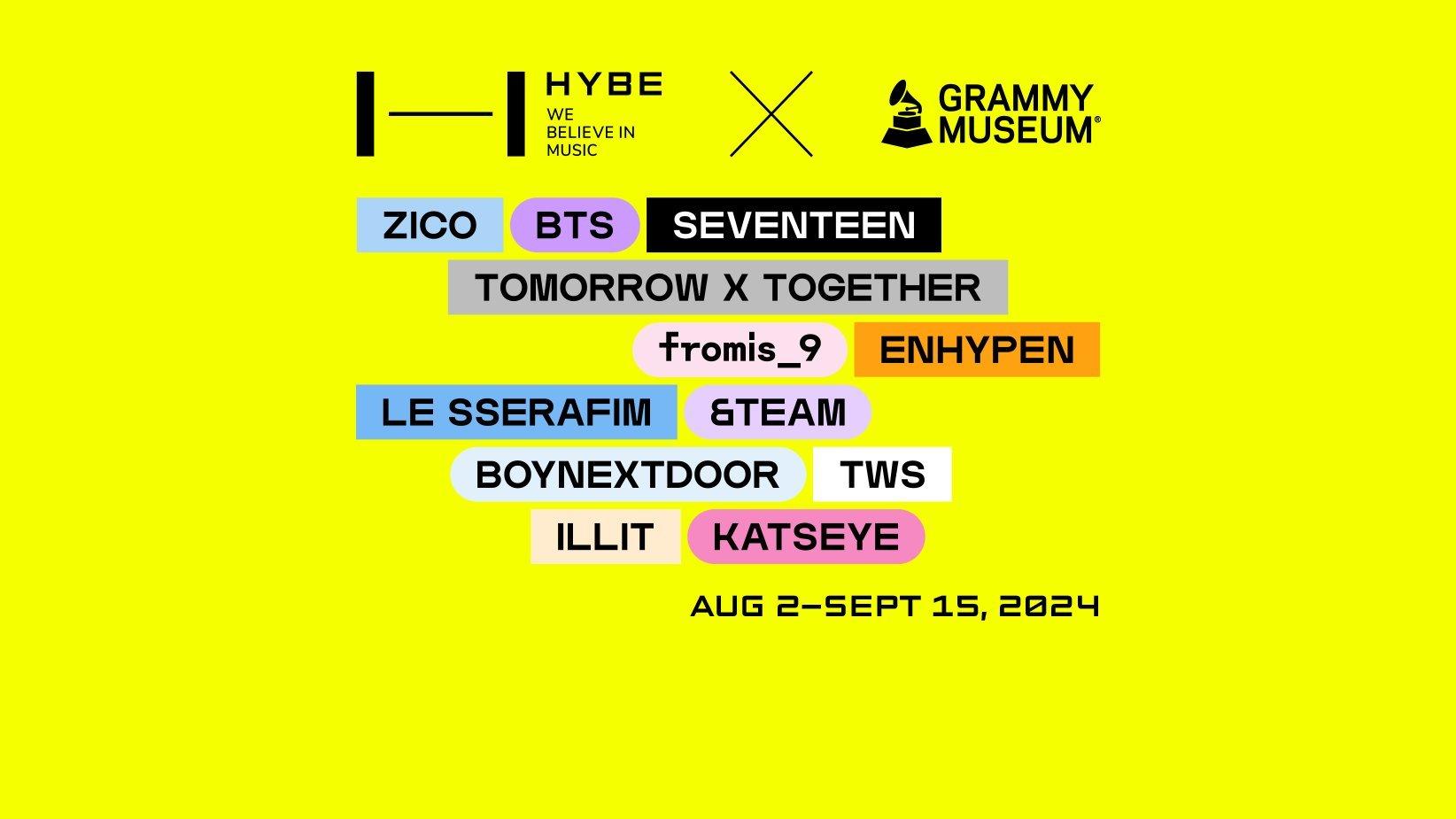
Graphic courtesy of the GRAMMY Museum
news
GRAMMY Museum Partners With HYBE For New K-Pop Exhibit 'HYBE: We Believe In Music' Opening Aug. 2
Running Aug. 2 through Sept. 15, the GRAMMY Museum exhibit showcases artifacts from superstar HYBE artists, including BTS, SEVENTEEN, TOMORROW X TOGETHER, ENHYPEN, LE SSERAFIM, and many more.
The GRAMMY Museum joins forces with HYBE to present its newest exhibit, HYBE: We Believe In Music, A GRAMMY Museum Exhibit. This interactive exhibit chronicles the history and impact of HYBE, and showcases its legacy of unparalleled innovation and creativity as a trend-setting global entertainment brand.
The exhibit opens on Aug. 2 in downtown Los Angeles and features spotlight moments with K-pop stars BTS, SEVENTEEN, TOMORROW X TOGETHER, ENHYPEN, LE SSERAFIM, and many more. "HYBE: We Believe In Music" runs through Sept.15. The exhibit will kick off on Aug. 1 with "Global Spin Live: TWS," a program featuring a moderated conversation with K-pop group TWS, followed by a performance.
The exhibit traces HYBE's evolution and influence by showcasing instantly recognizable artifacts from its roster of artists, creators, and fans. The displays notably feature original outfits worn in iconic music videos such as "Yet To Come (The Most Beautiful Moment)" by BTS, "MAESTRO" by SEVENTEEN, "Sugar Rush Ride" by TOMORROW X TOGETHER, "Sweet Venom" by ENHYPEN, and "EASY" by LE SSERAFIM. HYBE: We Believe In Music also boasts accessories and performance gear donned by ZICO, fromis_9, BOYNEXTDOOR, TWS, &TEAM, and ILLIT. The exhibit marks the first time these artifacts will be on display together in one location.
Other highlights include interactive sing-along and dance rooms, a dedicated Fan Section celebrating the endless support between HYBE artists and their fandoms, a Mono to Immersive room featuring BTS's 2022 GRAMMYs performance of "Butter," and a Photoism Booth that allows visitors to pose alongside their favorite K-pop artists. The GRAMMY Museum exhibit will also feature exclusive video content with producers, artists, music videos, and more.
"HYBE and their artists represent the present and future of the global music landscape, and our goal with this exhibit is to deepen the appreciation and respect for its creators and performers," says Michael Sticka, President/CEO of the GRAMMY Museum. "HYBE has contributed to creating a playground of innovation that inspires fandoms that transcend age, gender, geography and beyond. The GRAMMY Museum is thrilled to provide a space where fans can express their love for K-pop and feel closer to their favorite idols."
Read more: 11 Rookie K-Pop Acts To Know In 2024: NCT Wish, RIIZE, Kiss Of Life & More
HYBE Chief Operating Officer Taeho Kim added, "Putting out an exhibition that captures HYBE's journey is a new experience for us. We're very excited about this partnership with GRAMMY Museum, and we look forward to welcoming music fans who visit the museum to enjoy and connect with our historical pieces."
The exhibit highlights the roots of HYBE's meteoric rise. In 2005, South Korean producer, composer, and songwriter Bang Si-Hyuk, known as "hitman" Bang, changed the trajectory of Korean pop music by launching the record label Big Hit Entertainment. He soon signed a talented 16-year-old rapper named RM, which became the first step in creating the label's groundbreaking boy band — BTS. With the group's global success, "hitman" Bang and Big Hit Entertainment became known as musical trailblazers and record industry innovators. Big Hit Entertainment has now evolved into HYBE, which only continues to break boundaries in music and beyond.
More K-Pop News
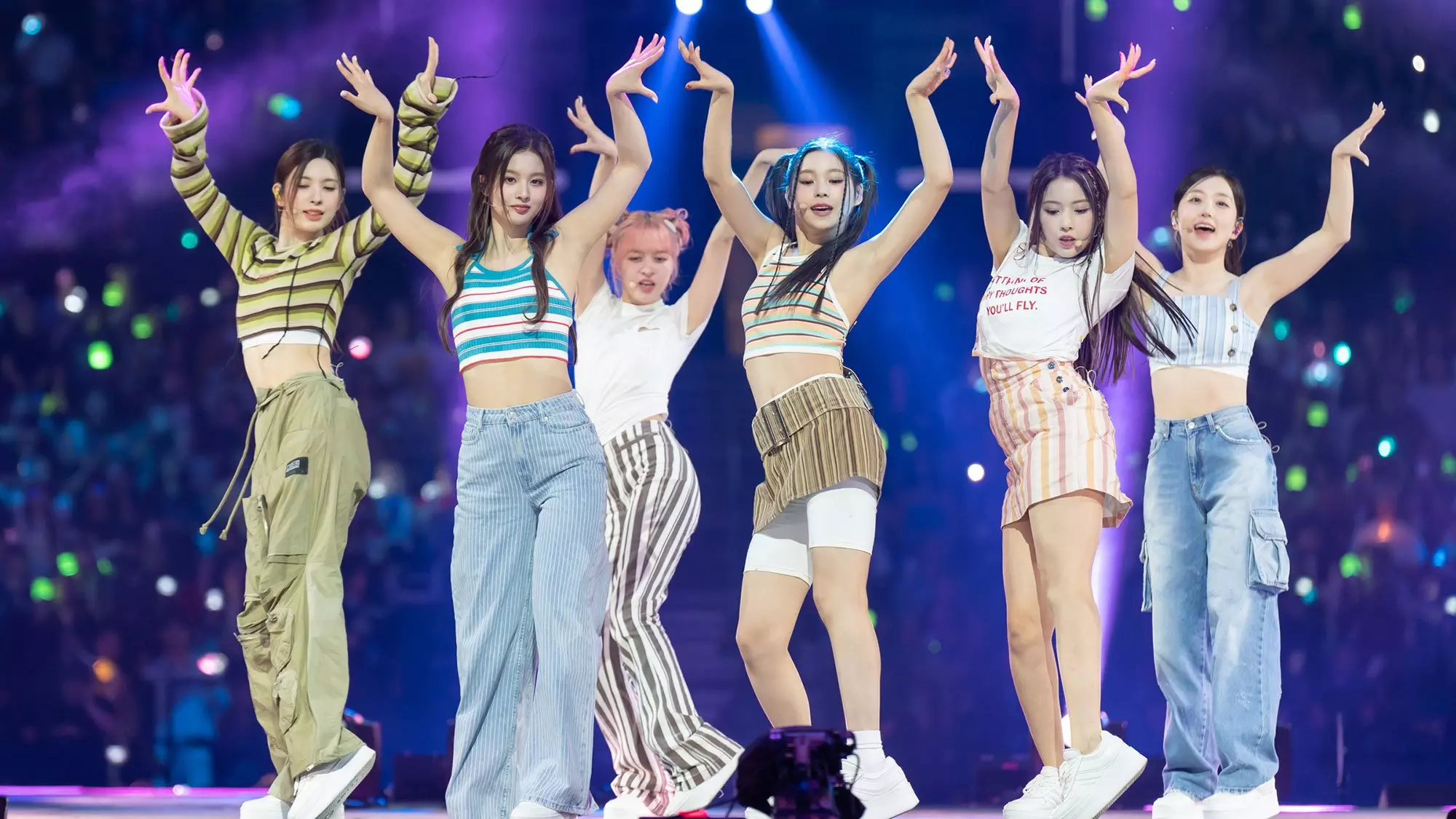
KCON L.A. 2024 Returns: Get Ready With This Playlist Featuring NCT 127, Zerobaseone, ENHYPEN, Zico & More
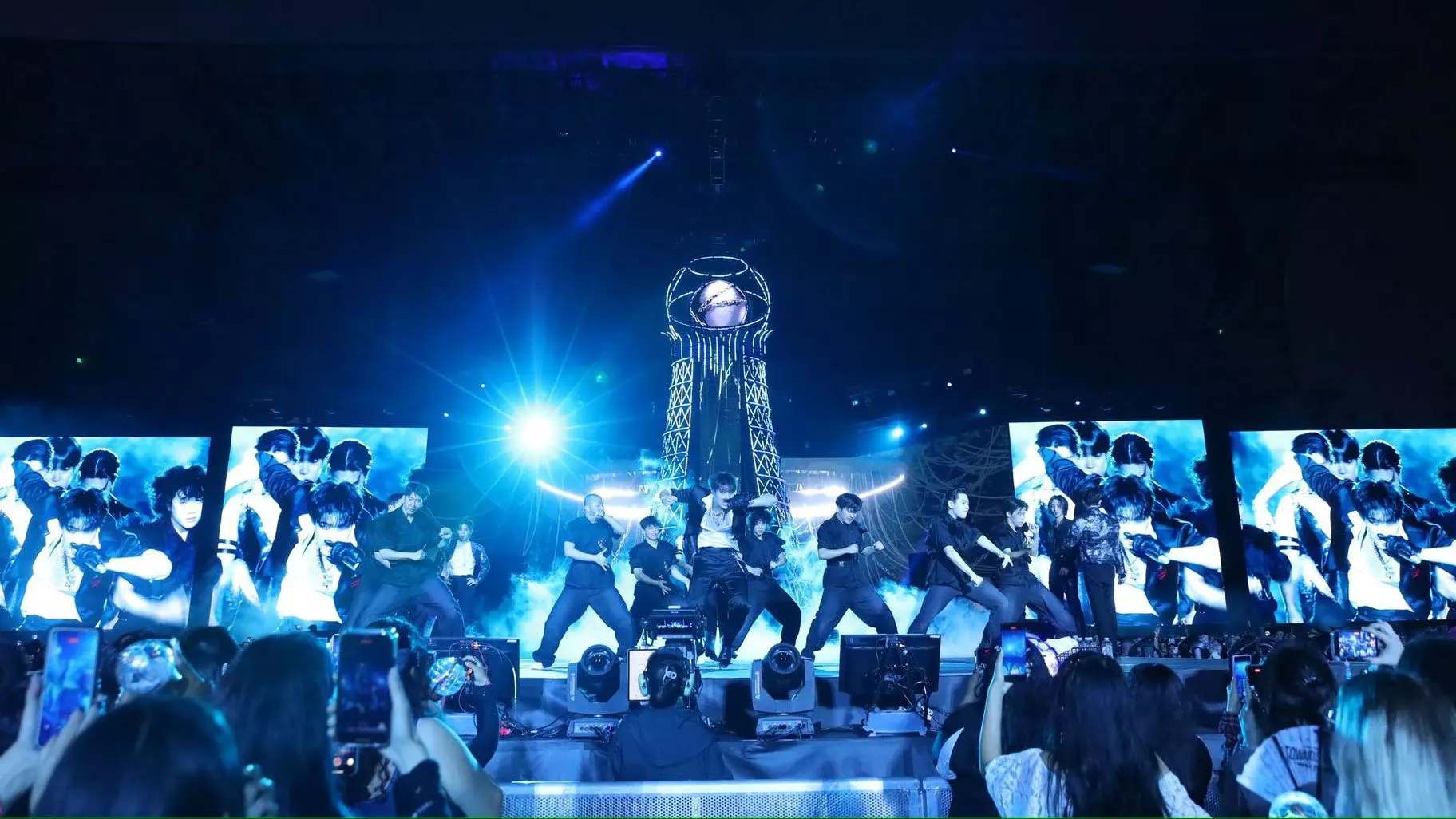
ATEEZ’s First U.S. Stadium Show Was A Triumph & Testament To Their Growth
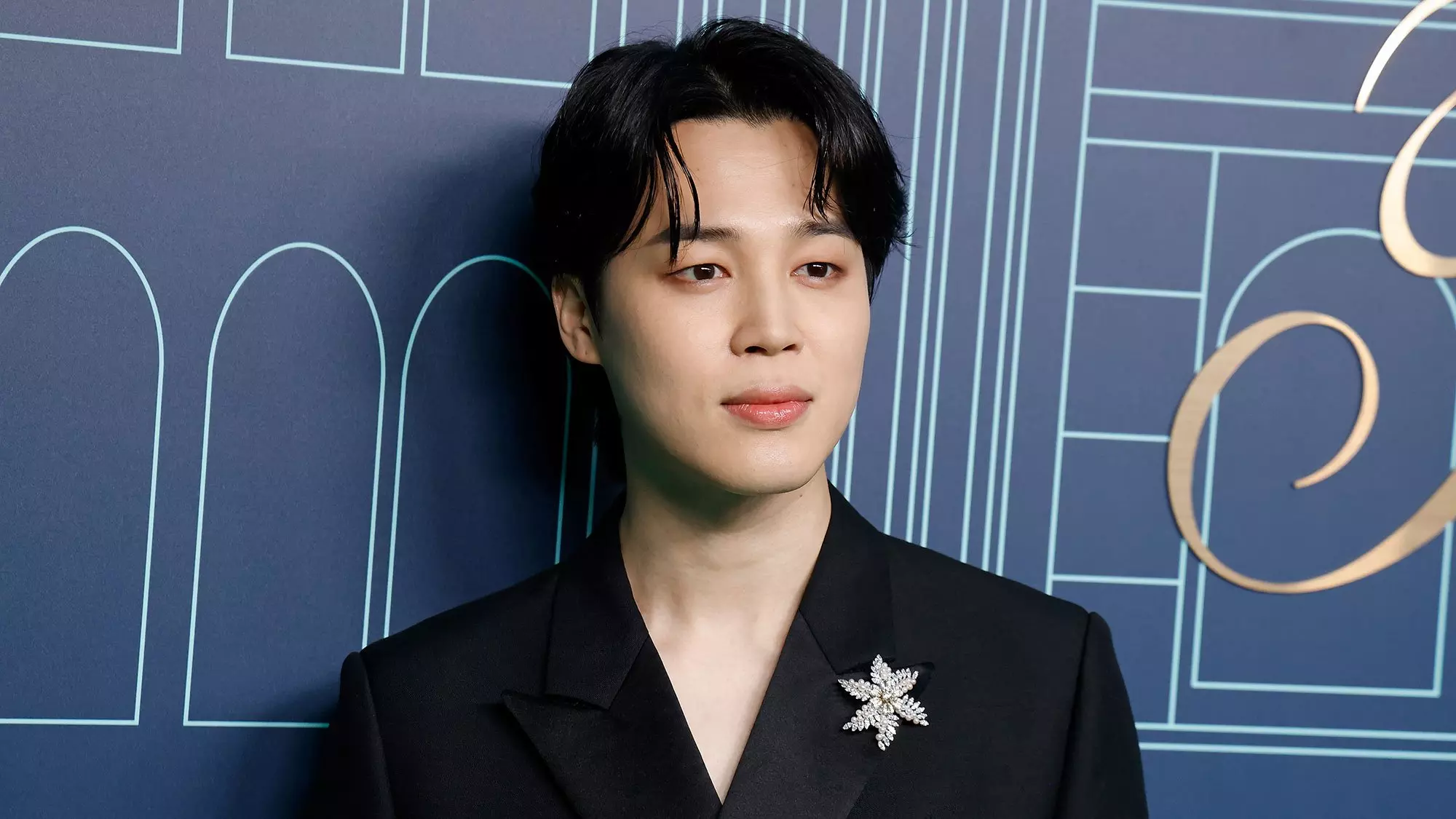
5 Takeaways from BTS Jimin's New Album, 'MUSE': A Bold Exploration Of Love And Inspiration
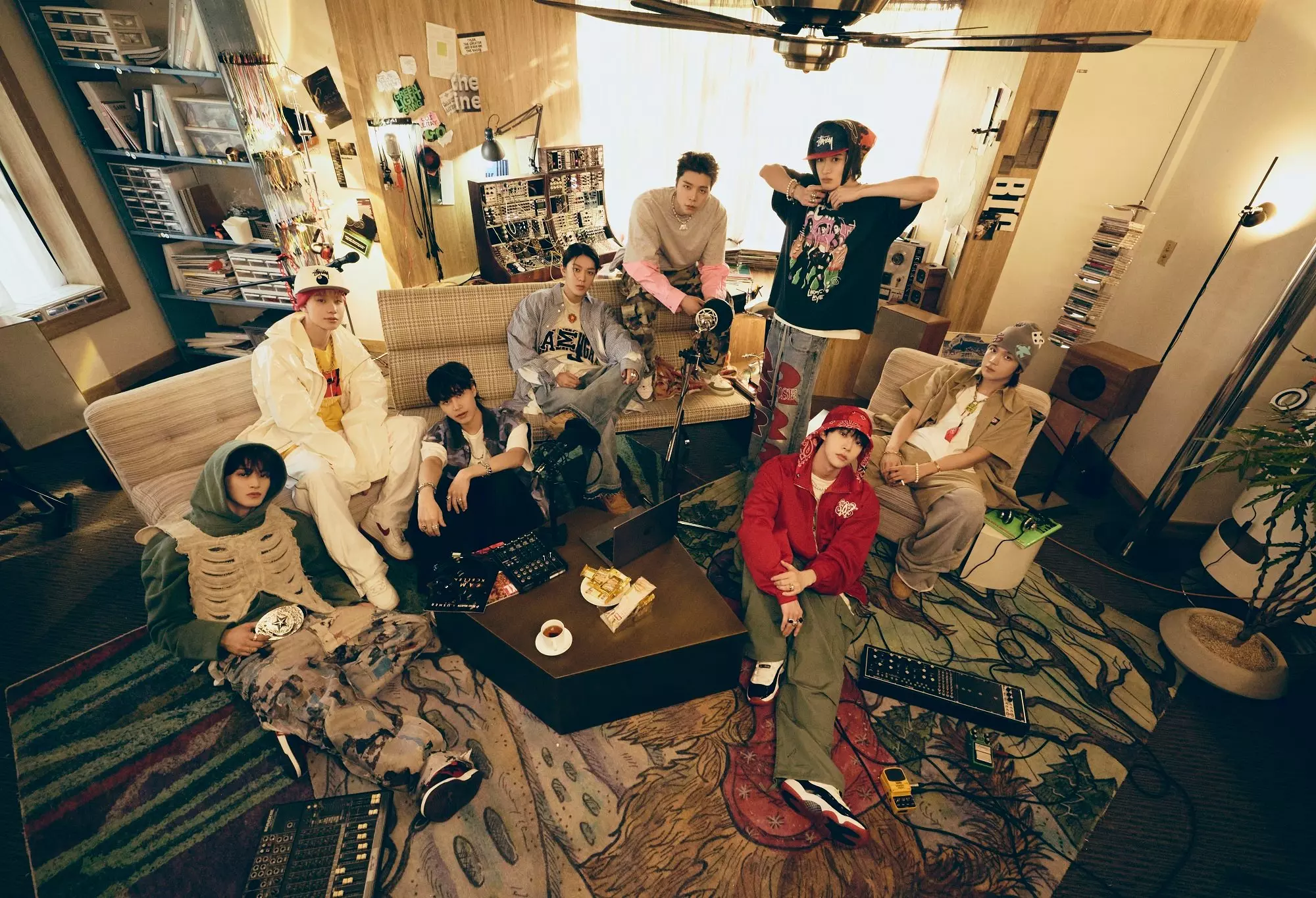
NCT 127 Essential Songs: 14 Tracks You Need To Know From The K-Pop Juggernauts
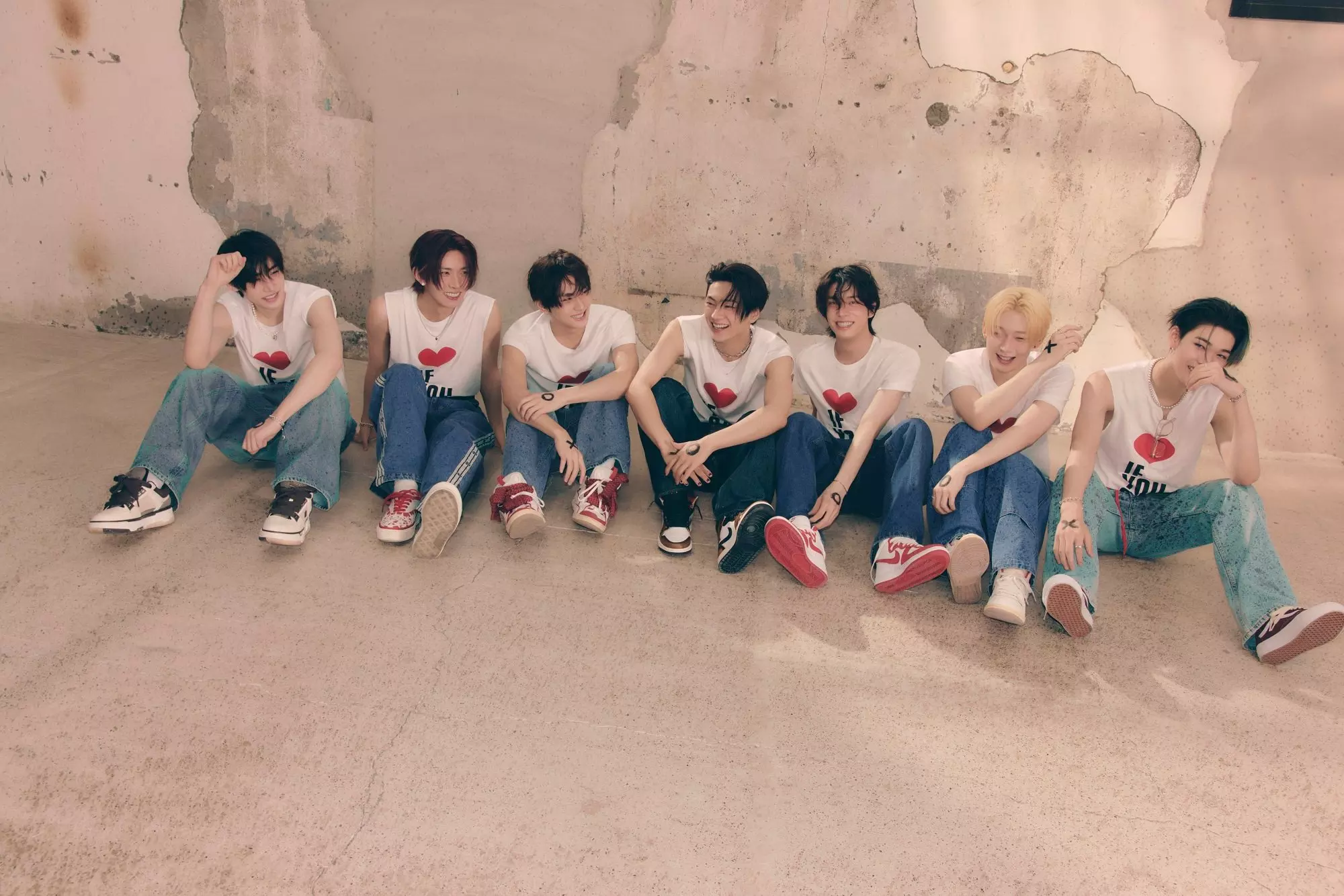
ENHYPEN And JVKE "Say Yes" To Cross-Cultural Collabs & Exploring New Genres

Photo: The Chosunilbo JNS/Imazins via Getty Images
list
New Music Friday: Listen To New Songs From LISA From Blackpink, Lil Nas X, Kelsea Ballerini, MC Lyte & More
Hot summer days require even hotter tunes. Here are some fresh-out-the-oven songs and albums by Hiatus Kaiyote, Lucky Daye, Headie One, Kaitlin Butts, and more.
We’ve been feeling the heat for a minute now, but summer is finally, officially, upon us.
What do you have on deck to soundtrack it? Perhaps you’re checking out Camila Cabello’s fourth offering, C,XOXO. Or Jxdn’s expectations-bucking new album, When the Music Stops. And there are so many other worthy candidates for your playlist — from Lupe Fiasco’s Samurai to Omar Apollo’s God Said No.
No matter where your stylistic compass points, this Friday release day has got something for you. As you gather your sunscreen and shades, let’s breeze through a cross-section of what’s out there.
LISA — "Rockstar"
K-pop loves its solo releases, showcasing how the various members of a group can shine individually while combining with ecstatic chemistry. Enter LISA, one-fourth of Korean titans BLACKPINK, who's already turned heads with her 2021 debut album, Lalisa.
"Rockstar" is another swing outside her main gig, featuring serrated chiptune production and LISA's commanding rap flow. The gritty, urban, futuristic video is a visual treat, and the chorus's boast of "Lisa, can you teach me Japanese?" is a multilingual flex — as well as a maddeningly unshakeable earworm.
Kelsea Ballerini & Noah Kahan — "Cowboys Cry Too"
The "Peter Pan" heavyweight and four-time GRAMMY nominee Kelsea Ballerini has called 2024 "a new chapter of music." Her collaboration with folk/pop singer/songwriter Noah Kahan, "Cowboys Cry Too," is the tip of the spear.
More than a month after the pair performed together at the 2024 Academy of Country Music Awards, their first recorded team-up is an aching, yearning ballad about breaking down a gruff exterior and revealing true emotions.
"Cowboys cry too/ They may not let 'em fall down in their hometown thinkin' they still got s*** to prove," Ballerini sings in the chorus. "That well runs deep/ But when he's showin' his skin, lettin' mе in, that's when he's toughest to mе."
Lil Nas X — "Here We Go!" (from the Netflix film 'Beverly Hills Cop: Axel F')
"So excited to release the best song of all time this friday!," Lil Nas X proclaimed on Instagram. (And on a Beverly Hills Cop soundtrack, no less!)
"Here We Go!" comes at an inflection point for the "J Christ" singer: "sorry I've been so scared with my art lately," he added in the same post. "I'm coming around to myself again. I will make you guys very proud."
This pro forma banger certainly inspires pride: tenacious lines like "I'm livin' and livin' I wanna die/ They tryna get even/ I'm beatin' the odds" will get under your skin. As for Beverly Hill Cop: Axel F, the Eddie Murphy joint will whiz to your screen July 3 via Netflix.
Lucky Daye — 'Algorithm'
Lucky Daye picked up a win for Best Progressive Album at the 2022 GRAMMYs, for Table for Two. After a slew of nominations for work with Beyoncé and Mary J. Blige, he's investigating the Algorithm.
The single "HERicane" was just a teaser, with songs like "Blame," featuring Teddy Swims; "Paralyzed," featuring RAYE;" and "Diamonds in Teal" expanding on and honing his soul-funk-R&B vision.
"Don't know pickin' sides/ 'Cause I'm rollin' in desire," he dreamily sings in the gently roiling "Diamonds in Teal." "I don't know which lie's true/ Or maybe I do, or maybe I'm you." It's a suitable mission statement wrapped in a stealthily seductive package.
Hiatus Kaiyote — 'Love Heart Cheat Code'
A jazzy, soulful, psychedelic band of Aussies, Hiatus Kaiyote has been wowing audiences for more than a decade. Whether through sampling or features, they've crossed paths with Drake, Anderson .Paak, and Beyoncé and Jay-Z.
Love Heart Cheat Code builds brilliantly on their last three albums: their 2012 debut Tawk Tomahawk, 2015's Choose Your Weapon, and 2021's Mood Valiant. Tracks like "Telescope," "Everything's Beautiful," and "Make Friends" are burbling brooks of atmosphere, groove and vibe.
Boulevards — 'Carolina Funk: Barn Burner on Tobacco Road'
Any fans of deep, pungent funk grooves should investigate Boulevards immediately. The project of mastermind Jamil Rashad, their new album Carolina Funk: Barn Burner on Tobacco Road tips its hat to yesterday's funk with a contemporary twist, bringing a refreshing spin on the well-trod template of syncopated basslines and stabbing horns.
Across highlights like "Do It Like a Maniac Part 1&2" and "Run & Move," Boulevards shows — once again — that few can nail this gritty sound quite like Rashad and crew.
Headie One — 'The Last One'
British drill-inflected MC Headie One first made a splash overseas with his 2023 debut album, Strength to Strength. Less than a year later, he's returning with The Last One.
Back in 2022, he hinted at the existence of his sophomore album in his non-album track "50s" — "The fans calling for 'Martin's Sofa'/ It might be the first single from my second," he rapped.
Helmed by that single, The Last One features Potter Payper, Stormzy, Fridayy, Skrillex, and more. The album is a leap forward in terms of production, scale and exploration.
Katlin Butts — 'Roadrunner!'
Any theater kid worth their salt knows at least a few bars from the musical "Oklahoma!"; country sensation Kaitlyn Butts has just unfolded it into an entire album.
"It's a love story but there's also a murder and a little bit of an acid-trippy feel to it at times; it's set in the same place where I come from," she said in a statement, noting she saw "Oklahoma!" with her parents every summer during childhood. "Once I got the idea for this album," she continued, "I couldn't believe I hadn't thought of it before, and it turned into something that completely encompasses who I am and what I love."
A laugh riot as well as a colorful, openhearted statement, Roadrunner! does the old Rodgers and Hammerstein chestnut good.
Read more: 5 Female Artists Creating The Future Of Country Music: Jaime Wyatt, Miko Marks & More
Amaarae — 'roses are red, tears are blue — Fountain Baby Extended Play'
Futurist Afropopper Amaarae made a gigantic splash with her second album, 2023's Fountain Baby — even Pitchfork gave it their coveted Best New Music designation.
That lush, enveloping album just got an expansion pack: roses are red, tears are blue — A Fountain Baby Extended Play is a continuation of its predecessor with six new songs. The oceanic "wanted," featuring Naomi Sharon, is a highlight, as is a remix of "Disguise" with 6LACK.
"Ooh, I'll be wanted/ I've been wanted," a pitch-shifted Sharon sings near the end, as if turning over the phrase. "Wanted" is one way to describe Amaraae's position in the music landscape.
Learn more: Meet The Latest Wave Of Rising Afrobeats Stars: AMAARAE, BNXN, Oladapo & More
MC Lyte — "King King" (feat. Queen Latifah)
The 50th anniversary of hip-hop may have come and gone, but hip-hop is forever. Today, legendary hip-hop pioneers MC Lyte and Queen Latifah continue to bear the flame of the genre as an elevating force with "King King," a conscious, uplifting offering.
"This is dedicated to all the kings and all the soon to be kings/ We're counting on you/ We love you/ This is for you, you and you and you," MC Lyte begins, while Latifah holds it down on the chorus with "This your crown hold it/ Even if it all falls down show it/ You know the world is watching now I know you get tired from keepin' it all together/ We need you."
During Women's History Month in March, MC Lyte released "Woman," the first single from her upcoming album, featuring hip-hop icons Salt (of Salt 'N Pepa), Big Daddy Kane, and R&B singer Raheem DeVaughn. MC Lyte's first new album in nearly a decade drops this summer; keep your eyes and ears peeled.
Learn more: 9 Teen Girls Who Built Hip-Hop: Roxanne Shante, J.J. Fadd, Angie Martinez & More
Latest News & Exclusive Videos

2024 Paris Olympics Opening Ceremony: Watch Celine Dion, Lady Gaga, Gojira & More Perform

Ice Spice Is The Drill Queen On 'Y2K!': 5 Takeaways From Her Debut Album

New Music Friday: Listen To New Songs From Halsey, MGK And Jelly Roll, XG & More

Watch Young MC Win Best Rap Performance In 1990

The Red Clay Strays Offer A New Kind Of Religion With 'Made By These Moments'
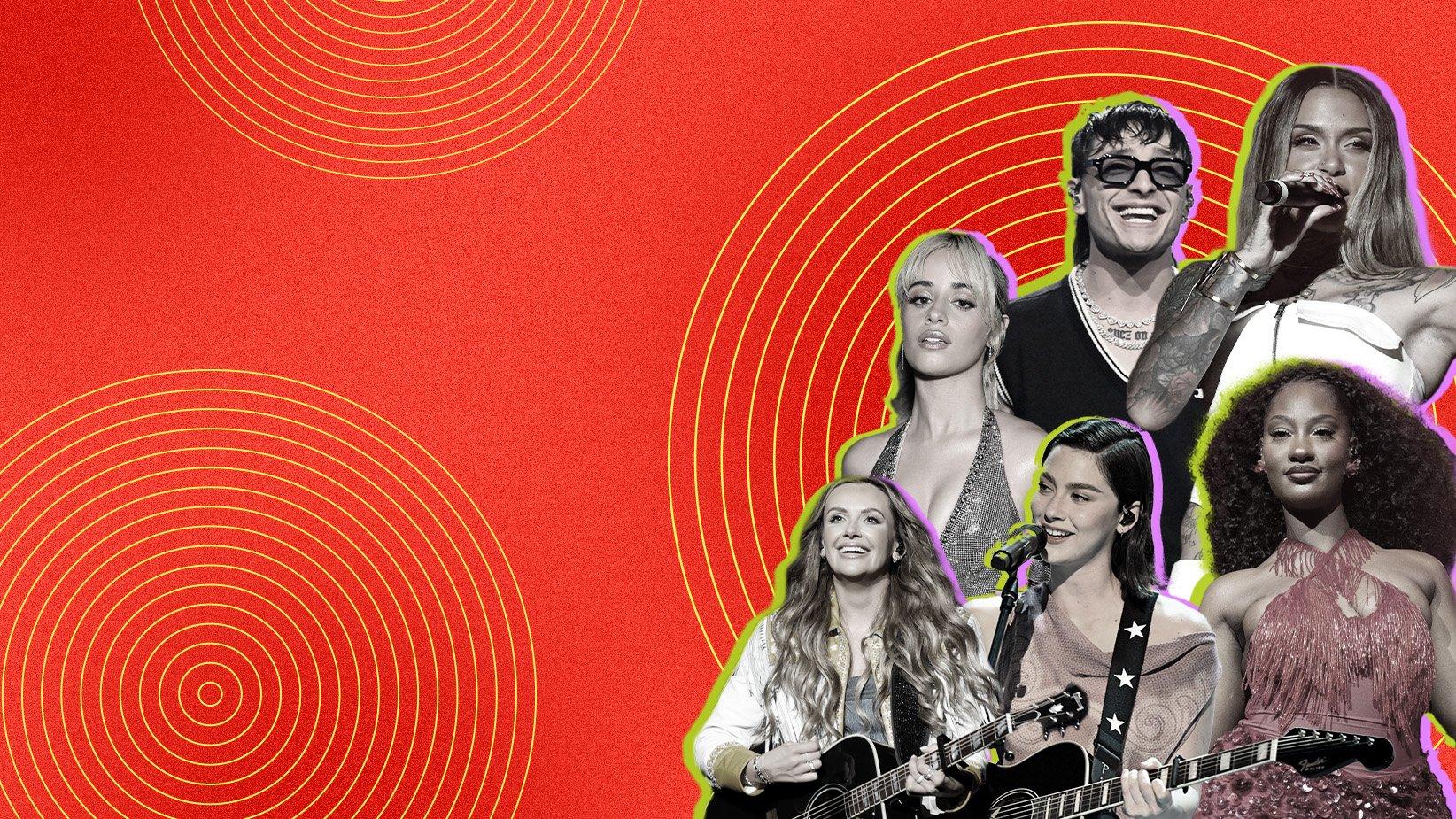
Photos (Clockwise from top right): Tim Mosenfelder/WireImage, Scott Dudelson/Getty Images for Coachella, Todd Owyoung/NBC via Getty Images, Jason Kempin/Getty Images for ABA, Cindy Ord/MG24/Getty Images for The Met Museum/Vogue, Todd Owyoung/NBC via Getty Images
list
15 Must-Hear Albums In June 2024: Charli XCX, Kehlani, Peso Pluma, Normani & More
Lots of exciting releases ring in summertime this June, with highly anticipated albums from Tems, Meghan Trainor, Gracie Abrams, Camila Cabello and several other stars across genres.
June's rising temperatures bring a heat wave of releases, and also important events. Pride Month, Black Music Month, and Juneteenth all happen in the next four weeks, and whether it's to celebrate or to console our hearts, a variety of new albums will soundtrack this journey.
The first Friday of the month packs a powerful group of women: Charli XCX's will release Brat, Meghan Trainor's returns with Timeless, Carly Pearce brings forward hummingbird, Tems makes her official debut with Born in the Wild, and DJ Peggy Gou will also put out her first LP, I Hear You.
Women continue to dominate later in the month, and former Fifth Harmony members Normani and Camila Cabello will both drop new material with Dopamine and C,XOXO, respectively. Gracie Abrams will return with The Secret of Us, as well as Kate Nash and her 9 Sad Symphonies, Joni Mitchell and The Asylum Albums (1976-1980), and Kehlani with Crash.
Of course, there will also be plenty of fresh music from male artists, too, like Peso Pluma's Éxodo, Imagine Dragons' Loom, Kygo's self-titled LP, Lucky Daye's Algorithm, as well as a new live album from Paul McCartney & Wings, titled One Hand Clapping. Closing out the month, all ears will be tuning in to Omar Apollo's God Said No, Lupe Fiasco's Samurai, Neil Young & Crazy Horse's Early Daze, a still unnamed Steve Aoki album, and many others.
Below, get to know more about 15 of the most exciting albums dropping in June 2024.
Charli XCX — Brat
Release date: June 7
The reception to Charli XCX's upcoming album cover — a low-res image of the word "brat" centered in a lime green background — was controversial, but that was precisely her intention. "I wanted to go with an offensive, off-trend shade of green to trigger the idea of something being wrong," the British singer told Vogue Singapore. "I'd like for us to question our expectations of pop culture — why are some things considered good and acceptable, and some things deemed bad? ... I'm not doing things to be nice."
Following 2022's Crash, Brat is Charli's sixth studio album, and boasts 15 club-ready tracks. Over on X (formerly Twitter), the pop provocateur stated that she "was born to make dance music," and that this is the album she's "always wanted to make." A preview of Brat's sleek, smacking sounds can be heard on singles "Von Dutch" and "360," plus a few other tracks shared in advance. The album also includes "So I," a tribute to late producer and DJ SOPHIE.
In support of the album, Charli lined up a slew of performances and DJ nights (dubbed Partygirl) in June, including stops in London, New York, and São Paulo. Later on, she will join Troye Sivan on their 2024 co-headlining Sweat Tour, set to kick off in September and hitting arenas around North America.
Tems — Born in the Wild
Release date: June 7
Nigerian singer Tems earned the eyes and the ears of international media with her Afrobeats-infused R&B. First raising attention with her feature in Wizkid's 2020 single "Essence," she later built up a devoted fandom through two EPs: 2020's For Broken Ears and 2021's If Orange Was a Place. In 2022, she was credited as a featured artist in Future's "Wait For U," which led her to win a GRAMMY for Best Melodic Rap Performance.
On June 7, Tems will release her long-awaited debut album, Born in the Wild. The official announcement came with a teaser video for the title track, disclosed one day after her Coachella set in April. "It's all over the news, all over the news, I know this/ Under the sun, struggling to find my focus/ When I was young, younger then/ I was always running away," she sings, reflecting on her childhood in Lagos. "I grew up in the wilderness/ Didn't know much about openness."
The record's first single,"Love Me JeJe," came out on April 25, followed by the announcement of a world tour spanning Europe, North America, and Australia from June to November.
Carly Pearce — hummingbird
Release date: June 7
"When you hear this album — wherever you are on your journey, I hope it shows you that pain can be a lesson that shows you just how strong you are and what you truly deserve," Carly Pearce wrote on Instagram as she announced her fourth studio album, hummingbird, in March.
The release follows 2021's 29: Written in Stone, which documented the country star's journey through marriage and divorce at the age of 29. "The last few years have been a season of loss and growth, of healing and happiness," Pearce added. "A belief that if I did the inner work, I would rebuild myself stronger than I was before, and a knowing that I have done some living and will always be unapologetic about it."
Hummingbird holds 14 tracks that encapsulate the GRAMMY-winning singer's redemption and "true love for country music." Among them is her current single, "We Don't Fight Anymore" with Chris Stapleton, and the title track, and previously released tracks "country music made me do it", "heels over head," "my place," and "fault line."
Peggy Gou — I Hear You
Release date: June 7
With 2023's "(It Goes Like) Nanana," DJ and singer Peggy Gou bounced from underground savant to worldwide summer queen. The single went viral on TikTok, entered charts across the globe, and led Gou to become one of the most in-demand electronic music artists in recent years — culminating with the title of first female DJ to headline Ushuaïa Ibiza.
Now, the South Korean-born, Berlin-based phenom is gearing up to release her debut LP, I Hear You, out June 7 via XL Recordings. According to a press release, the album depicts Gou "boldly claiming her voice through the kaleidoscopic lens of '90s house music." Featuring 10 tracks, it represents the "culmination of years of work," and includes the aforementioned "(It Goes Like) Nanana," 2021's "I Go," "I Believe in Love Again" with Lenny Kravitz, and lead single "1+1=11."
"I Hear You is more than just my debut album," Gou stated in the press release. "It embodies countless hours of dedication in my journey to create something timeless, and is a testament to the power of listening, to ourselves and to each other."
Bon Jovi — Forever
Release date: June 7
Rock icons Bon Jovi have been active for so long that it feels accurate to name their 16th studio album "Forever." In fact, the New Jersey band is celebrating their 40th anniversary with the release, set to drop on June 7.
"This record is a return to joy," said frontman Jon Bon Jovi in a statement. "From the writing, through the recording process, this is turn up the volume, feel good Bon Jovi." Forever follows 2020's 2020, and marks the band's first release after Bon Jovi's vocal surgery in 2022. Ushering in this new chapter, they also shared a Disney+ four-part documentary named Thank You, Goodnight: The Bon Jovi Story, and lofty single "Legendary."
In February of this year, Jon Bon Jovi was honored as the 2024 MusiCares Person Of The Year. The award recognized his extensive philanthropic work in a benefit gala during GRAMMY week — and granted the band yet another reason to celebrate.
The Decemberists — As It Ever Was, So It Will Be Again
Release date: June 14
Following a six-year hiatus, The Decemberists are back with their ninth record, As It Ever Was, So It Will Be Again. The double-LP holds 13 tracks that are split into four thematic sides, and features guest appearances from The Shins' James Mercer and R.E.M.'s Mike Mills.
After sharing the opener and lead single, "Burial Ground," the folk rock band from Portland, Oregon, shared the 19-minute prog closer "Joan in the Garden," which was inspired by the story of Joan of Arc — and ultimately teased As It Ever Was, So It Will Be Again will have many musical layers.
"I wanted to make my own version of Joan," vocalist Colin Meloy said in a press release. "But the song that came was as much about the creative process as it was about the actual woman, about angelic visitation and creative visitation and the hallucinogenic quality of both."
Last month, The Decemberists announced a lengthy North American summer tour, starting on April 30 in Kingston, New York, and wrapping it up with a special hometown show on Aug. 3 in Troutdale, Oregon.
Normani — Dopamine
Release date: June 14
Since her highly addictive 2019 hit, "Motivation," Normani has kept fans on the tip of their toes for a solo debut LP. She even turned their questioning into a website: wheresthedamnalbum.com. At last, the wait is finally over: after five long years, Dopamine will come out on June 14.
The album is spearheaded by lead single "1:59," which features rapper Gunna and blooms with late '90s R&B inspiration. Normani also shared a sultry album teaser, "Dopamine (First Dose)," which features a snippet of her latest release from the album, the airy "Candy Paint."
"The album feels like liberation, like a season of freedom," said the former Fifth Harmony member in an interview for WhoWhatWear earlier this year. "Not just because the record is finally coming out, but because it's a celebration of everything I have been through to get to this moment … I know I needed time, experiences, and space coming out of [Fifth Harmony] in order to become the version of myself I needed to be."
Peso Pluma — Éxodo
Release date: June 20
Almost exactly a year after releasing his third studio album, Génesis, Mexican star Peso Pluma follows his GRAMMY-winning LP by doubling down. Éxodo, his fourth studio effort, is a double album comprising 24 tracks — 16 corridos tumbados, 8 urbano songs — and a stellar guest list featuring Cardi B, Rich the Kid and Quavo, Anitta, and more.
In an interview with Rolling Stone, Pluma stated that this album will confront more directly the negative press that surrounds him. "[On Génesis] people already saw the good side, the superhero side. But I think this year, they're going to know a darker side," he added.
He's previewed Éxodo through seven tracks so far, including "LA DURANGO" with Junior H and Eslabón Armado, "Rompe La Dompe" also with Junior H and Oscar Maydon, and "LA PEOPLE II" with Tito Double P and Joel de la P. Pluma is currently on a massive arena tour throughout the U.S., set to conclude on October 11 in Montville, Connecticut.
Gracie Abrams — The Secret of Us
Release date: June 21
Sixteen months after releasing her debut album, Good Riddance, GRAMMY-nominated singer Gracie Abrams is already back with her second LP, The Secret of Us. Set to drop on June 21, the project holds 13 tracks and is led by the lively pop and sharp lyrics of "Risk."
The single was co-written by Abrams and her childhood best friend, Audrey Hobert, and co-produced by Abrams and The National's Aaron Dessner (who helmed the production of Good Riddance). On Instagram, Abrams shared that she and her team "had real, true fun writing this album," but that "there were also the occasional tears." The raspy-voiced star also revealed The Secret's track list, which includes a collaboration with Taylor Swift in the track "us."
Abrams opened several dates of Swift's The Eras Tour in 2023. She'll celebrate her new album later this year by returning to the Eras Tour lineup, joining Swift again for the final North American shows in October, November and December.
Lake Street Dive — Good Together
Release date: June 21
"The ethos of Good Together can be described as 'joyful rebellion,' just as energetic and danceable as it is defiantly principled," reads a press release on Lake Street Dive's upcoming record. Produced by Mike Elizondo, the album's main goal is to "highlight our shared humanity" through the quintet's dynamic, genre-bending compositions.
"There's a lot to be angry about in the world right now, a lot of pain and rage and divisiveness, but it isn't sustainable to constantly live in that anger — you need something else to keep you going," drummer Mike Calabrese said in a statement. "Joy is a great way to sustain yourself, and we wanted to encourage everyone to stay aware of that. In a way this album is our way of saying, 'Take your joy very seriously.'" A glimpse of those feelings appear in the laid-back album singles "Better Not Tell You" and the title track.
Lake Dive Street have also announced the biggest world tour of the band's career, kicking off its North American leg on June 14 in Asbury Park, New Jersey, and wrapping on October 12 in Atlanta, Georgia. In January 2025, they head on to Europe and the U.K.
Kehlani — Crash
Release date: June 21
It's already summer in Kehlani's world — or at least this is what their single "After Hours" feels like. Marking the Californian singer's first release since 2022's Blue Water Road, "After Hours" samples Cordel "Scatta" Burrell's "Coolie Dance Riddim" and sets expectations high for their upcoming record, Crash.
While little else is known about the album, Kehlani has been teasing bits and pieces of it on social media. She also released a second track, a booming dedication to a loved one called "Next 2 U," which Kehlani declared is "my favorite one" from the album.
Though Kehlani has yet to announce a coinciding tour for Crash, she'll play three shows at LIV Nightclub Las Vegas, in the Fontainebleau hotel. The first took place on May 31 — just hours after "Next 2 U" arrived — and the other two are on July 21 and Aug. 2.
Camila Cabello — C,XOXO
Release date: June 28
Another Fifth Harmony alum will make a comeback this month: Camila Cabello is set to release her fourth album, C,XOXO, on June 28. The LP marks a new sonic and visual era for the Cuban-born, Miami-based artist, and its inaugural mark came in the form of platinum blonde locks.
"The voice that I found with my new album has this big baddie energy vibe," Cabello explained in a recent Billboard cover story. "Part of that spirit is taking risks, not giving a f— and doing whatever you want. I think the blonde was me staying true to that feeling." The first single off the project, "I LUV IT" with Playboi Carti, displays how this fearless persona takes shape through hyperpop synths and a sample from Gucci Mane's "Lemonade."
Cabello also realized that this LP was a love letter to the city of Miami. "So much of the inspiration for this album was driving, listening to music, rolling the windows down and hearing what people in the city are listening to," she added. Among its collaborators are names like City Girls ("DADE COUNTY DREAMING"), Lil Nas X ("HE KNOWS"), and Drake, who features on "HOT UPTOWN" and "UUUGLY."
Imagine Dragons — Loom
Release date: June 28
Upon announcing Imagine Dragons' upcoming album, Loom, vocalist Dan Reynolds shared on Instagram that "working on this record was a rollercoaster." As he explained, "some days the songs came from a place of sadness and heartache and others joy and jubilance."
A press release further elaborated that the quartet's sixth LP will "represent the pinnacle of their artistic journey of self-discovery," while also balancing their familiar sounds with fresh ones. Through nine tracks, including lead single "Eyes Closed," Loom intends to symbolize "new beginnings on the horizon, the excitement for a new day, moments yet to come." As Reynolds added in his Instagram post, "may the things that loom in the future and distance be a beautiful tapestry of joy and pain that you can hang on your wall to reflect on as life passes us by."
The festive vibes will extend throughout the year, as the Las Vegas outfit just announced a world tour, which kicks off on July 30 in Camden, New Jersey. So far, they will stop through multiple cities in the U.S. and Canada through Oct. 22, but international dates are expected for 2025.
Omar Apollo — God Said No
Release date: June 28
"I gave it my everything," Omar Apollo said in a press release. "And God said 'no.'" Fortunately, the singer wasn't talking about crafting his sophomore LP, God Said No, but rather what led him to do it.
The 14-track record is described as "a survey of the emotional wreckage that followed the end of a torrid love affair," and was partially recorded at the legendary Abbey Road Studios in London. To process his grief, Apollo spent three months in the British city, and soon began to shape his most "soul-bearing and immediate body of work" so far.
In addition to vulnerable singles "Spite" and "Dispose of Me," Apollo also collaborated with musician Mustafa on "Plane Trees," and confirmed a participation by actor Pedro Pascal in an unspecified track — likely to be his namesake, "Pedro."
Lupe Fiasco — Samurai
Release date: June 28
Chicago rapper Lupe Fiasco is gearing up to release his ninth studio album, Samurai. Entirely produced by longtime collaborator Soundtrakk (who also produced Fiasco's previous effort, 2022's Drill Music In Zion), the record is "smooth, yet cerebral, brimming with ideas," according to a press release. It is also one of Fiasco's most personal works to date: "The album weaves things from my life as an artist, touching on things other artists go through," he said in a statement.
Samurai's eight tracks accompany the narrative of a battle rapper's career, from first honing his skills until mastering his craft. "Before rap even, martial arts was my whole life, and it still plays a huge role in my life," Fiasco added. "The overall themes of the album speak to the constant fight and the battle one goes through being in the entertainment industry. Some of the things we need to defend."
As for the title, Fiasco shared that "the word 'samurai' means to serve," and that his relationship to the word "meant that you need to be at the service of other people, either in the overall community, or in this instance, the rap community at large that I've been a part of for years."
Twenty One Pilots' Road To 'Clancy': How The New Album Wraps Up A Decade-Long Lore
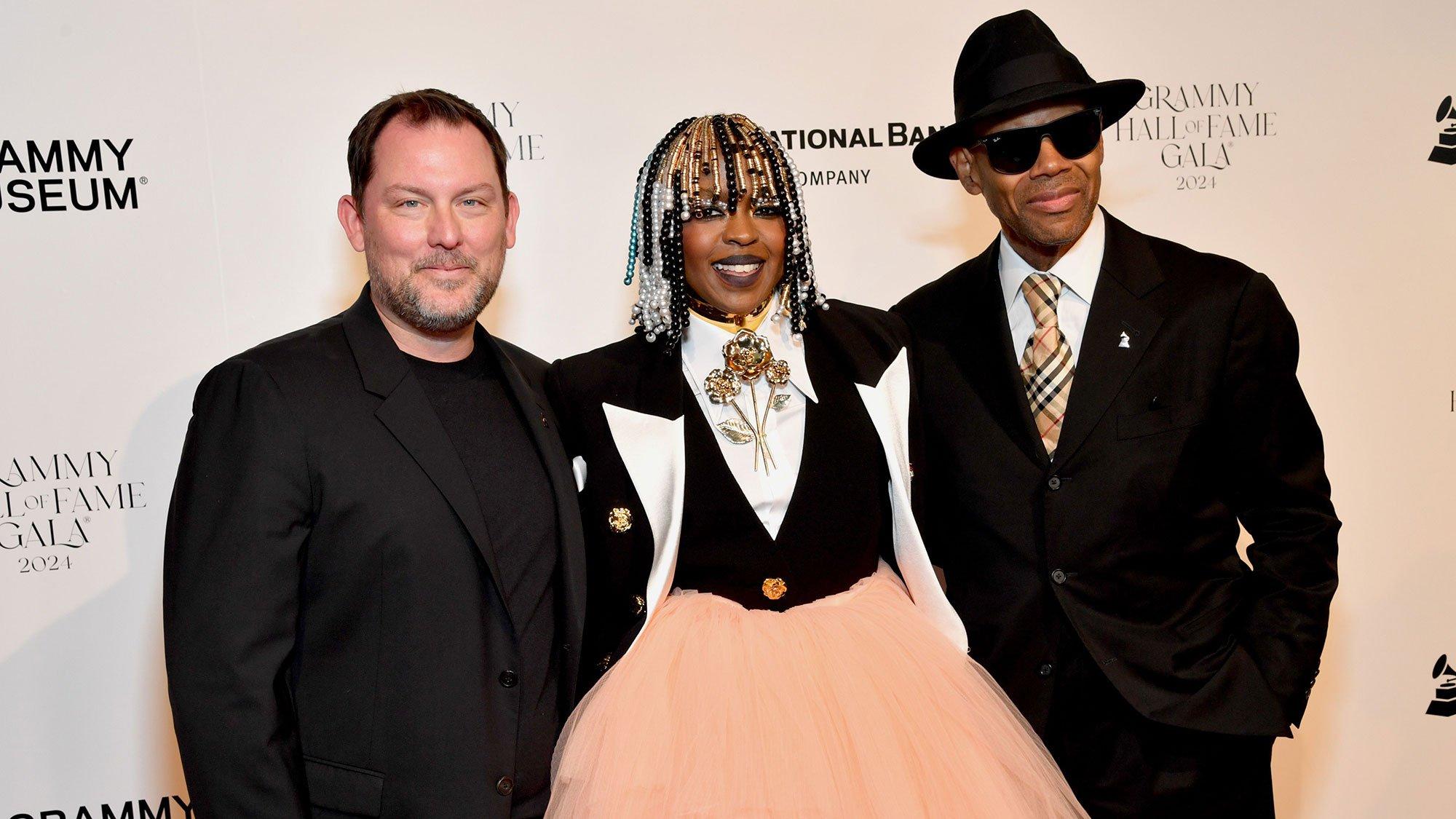
Photo: Sarah Morris/Getty Images for The Recording Academy
list
6 Key Highlights From The Inaugural GRAMMY Hall of Fame Gala Honoring Lauryn Hill, Donna Summer, Atlantic Records & Many More
The Recording Academy and GRAMMY Museum celebrated music's legacy with tributes to Charley Pride, Wanda Jackson, Buena Vista Social Club, and more, featuring performances by Andra Day, The War and Treaty, and other musical greats.
Many years ago, veteran CBS journalist Anthony Mason lost his entire record collection when it disappeared in transit as he moved from one place to another. Mason was inconsolable, and you could still hear a tinge of sadness in his voice when he recounted this painful story at the inaugural GRAMMY Hall of Fame Gala, held on May 21 at the Novo Theater in Los Angeles. The evening’s eloquent and entertaining host, Mason was making a point with his personal anecdote of lost records: music is priceless, one of our most treasured possessions — both as individuals and as a community. Preserving its legacy is essential.
It’s been over 50 years since the GRAMMY Hall of Fame was established by the Recording Academy's National Trustees to honor records of deep historical significance that are at least 25 years old. This year, the Recording Academy and the GRAMMY Museum paid tribute to 10 newly inducted recordings (four albums and six singles) by artists including De La Soul, Lauryn Hill, Buena Vista Social Club, Donna Summer, Guns 'N Roses, Charley Pride, Kid Ory’s Creole Orchestra, the Doobie Brothers, William Bell, Wanda Jackson, and Atlantic Records, the annual Gala's inaugural label honoree.
The first Hall of Fame Gala was a dazzling event presented by City National Bank, complete with guest speakers and performances by Andra Day, The War and Treaty, William Bell, Elle King, and HANSON covering some of the inducted works. The event underscored the sumptuous variety that continues to define popular music, spanning the sounds of hip-hop, rock, country, R&B, disco, and even the venerable Cuban dance music of decades past.
Here are six takeaway points from an evening marked by celebration and transcendent musical memories.
Donna Summer’s “I Feel Love” Has Lost None Of Its Edge
Studious music fans are well aware that “I Feel Love” — written by Donna Summer with visionary Italian producer Giorgio Moroder and British songwriter Pete Bellotte — is a shimmering disco gem, a futuristic precursor to the entire EDM genre. What was stunning about the Gala performance of the track by singer and actress Andra Day is how edgy and fresh the 1977 track still sounds today. Day’s ethereal reading was appropriately hypnotic, with live drums, nebulous synth textures and glorious, three-part vocal harmonies.
The Future Of American Music Is In Good Hands With The War and Treaty
Formed by husband and wife Michael Trotter Jr. and Tanya Trotter, The War and Treaty were rightfully nominated for Best New Artist at the 2024 GRAMMYs earlier this year. The duo’s electrifying combination of Americana, gospel, and rock is especially effective on a live stage, and the pair delivered a memorable rendition of Charley Pride's inducted Hall Of Fame country hit, “Kiss an Angel Good Mornin’,” recorded in 1971. The War and Treaty also received a standing ovation later in the evening for their performance of Ray Charles' classic, "What'd I Say," released in 1959.
26 Years Later, The Miseducation of Lauryn Hill Is Still Ahead Of Its Time
Released in August 1998, The Miseducation of Lauryn Hill sold more than 10 million copies in the U.S. alone, and became the first hip-hop artist to win Album Of The Year at the 1999 GRAMMYs. At the Gala, Andra Day delighted the audience — including Lauryn Hill and her family — with a soulful version of hidden track “Can’t Take My Eyes Off You,” originally a Frankie Valli hit from 1967. Day's performance was marked by brassy accents and funky bass lines, creating an unapologetically lush rendition that mirrored the sonic richness of Hill's original take.
Atlantic Records Transformed The Face Of Global Culture
Celebrating 75 years of inaugural label honoree Atlantic Records in the span of a few minutes loomed like an impossible task, but the Gala producers paid tribute to the legacy label well. Beginning with a short video, the event segment highlighted the miraculous roster assembled by Ahmet Ertegun and Herb Abramson that included Ray Charles, Aretha Franklin, Led Zeppelin, ABBA, Phil Collins, and Bruno Mars — to name just a few. But it was the actual performances that highlighted the label’s hold on pop culture: Ravyn Lenae’s breathy take on Roberta Flack’s “Killing Me Softly With His Song” made a case for considering the 1973 hit as one of the most vulnerable recordings of all time. On the other side of the dynamic spectrum, the epic rendition of Led Zeppelin’s “Stairway to Heaven” by alt-rock quartet Shinedown was appropriately intense.
The Wondrous Legacy Of Stax Records Should Not Be Underestimated
The home of such legendary artists as Otis Redding, The Staple Singers and Carla Thomas, Memphis-based Stax Records developed a rich, ragged sound with gospel, blues, R&B and luminous pop as its foundational pillars. Currently the subject of an HBO documentary series, "Stax: Soulsville USA," the record label defined American music during the ‘60s and ‘70s. Memphis singer/songwriter William Bell was one of its most prolific artists, and he regaled guests with a performance of his Hall of Fame inducted debut 1961 single, “You Don’t Miss Your Water.” At 84 years of age — and the winner of a Best Americana Album at the 2017 GRAMMYs — Bell was in rare form, and the band backed him up seamlessly, reproducing the sinuous organ lines of the original.
Read more: 1968: A Year Of Change For The World, Memphis & Stax Records
Future Editions Of The Gala Will Continue To Surprise And Delight
The inaugural GRAMMY Hall of Fame Gala set a high standard for future celebrations of iconic recordings. The event proved to be fertile ground for the creation of indelible music moments, showcasing the beauty and authority of music across genres and generations. Other honored Hall of Fame inducted recordings including De La Soul’s 3 Feet High And Rising, Guns’N’Roses Appetite For Destruction, the Buena Vista Social Club’s debut, Wanda Jackson’s “Let’s Have A Party,” Kid Ory’s Creole Orchestra’s “Ory’s Creole Trombone” and The Doobie Brothers’ “What A Fool Believes.”
As we look ahead, the excitement for future Galas grows, with each event promising to honor more historic recordings, and uphold the tradition of celebrating excellence in music's rich legacy.
Explore The 2024 GRAMMY Hall Of Fame Inductees
Revisiting 'The Miseducation Of Lauryn Hill': Why The Multiple GRAMMY-Winning Record Is Still Everything 25 Years Later
Remembering De La Soul’s David Jolicoeur, a.k.a. Dave and Trugoy the Dove: 5 Essential Tracks
Guns N' Roses 'Appetite For Destruction' | For The Record
An Ode To Donna Summer's 1970s: How The Disco Queen Embodied Both Innovator And Vixen
Essential Hip-Hop Releases From The 1980s: Slick Rick, RUN-D.M.C., De La Soul & More
For Charley Pride, Black Country Music Was A Self-Evident Truth
Beyoncé To Alison Krauss: 10 Times Women Made GRAMMY History
Love To Love Them, Baby: From Donna Summer To Dua Lipa, Meet The Women Singers Who Shaped (And Continue to Shape) Dance Music
10 Albums That Showcase The Deep Connection Between Hip-Hop And Jazz: De La Soul, A Tribe Called Quest, Kendrick Lamar & More
'The Miseducation Of Lauryn Hill': 25 Facts About The Iconic Album, From Its Cover To Its Controversy

Watch Kenny Loggins And Michael McDonald Take Home A GRAMMY For Song Of The Year For "What A Fool Believes" | GRAMMY Rewind
A History Of Casablanca Records In 10 Songs, From Kiss To Donna Summer To Lindsay Lohan
1968: A Year Of Change For The World, Memphis & Stax Records

Lauryn Hill's 'The Miseducation Of Lauryn Hill' | For The Record
